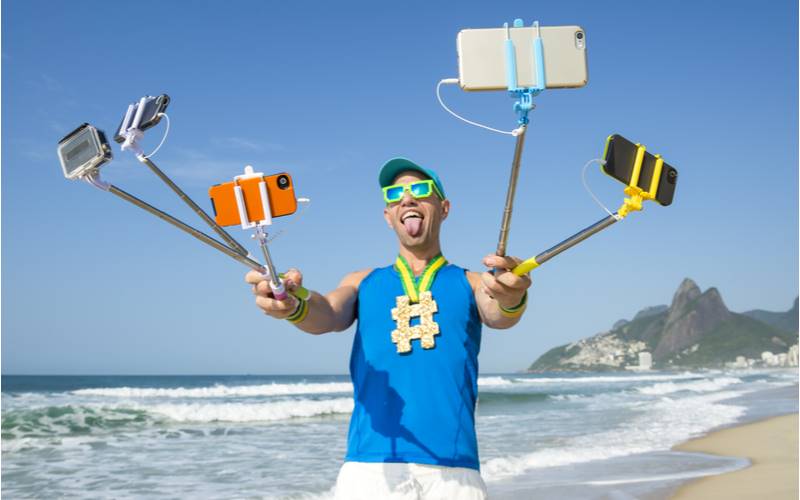As a result of the pandemic, we have seen customers dramatically shift to online channels. These days most customer journeys start online even if they may finish via a physical channel. It’s why Australian businesses are prioritising digital experiences and adopting what’s referred to as a digital-first mindset.
Customers expect seamless, fast, and consistent digital experiences. As the number of digital devices in consumers’ hands continues to proliferate and the range of digital platforms they can access expands, brands need to be able to provide seamless experiences across these channels. Ragy Thomas, CEO and Founder of Sprinklr comments, “The digital-first customer experience has become a top priority for all businesses and will only continue to accelerate. We have entered a new world where consumers are not only connected on a multitude of new platforms but are also empowered. This is happening across every industry and companies of every size”.
Rod Netterfield MBA CXPA, Head of Experience Design and Improvement at Griffith University, points out that digital-first is not new, “It didn’t start with the pandemic, but the pandemic has certainly accelerated it. I think it represents a major change in the mindset of most CX leaders and their businesses of how we create or curate experiences for our customers.”
As an example, Netterfield highlights how Australian supermarket retailers Coles and Woolworths have used digital technology to enrich the traditional experience of grocery shopping. “Via a smartphone app, I can order my groceries and have them delivered to my home. Alternatively, I can order my groceries online and have them ready for click and collect. But I still really love going to the grocery store and the physical experience of shopping. My Coles app allows me to upload my shopping list and it will sort my items by aisle. It means I don’t have to traipse up and down shopping aisles to find the items or category of items I want to buy.”

As well as a mindset, digital-first is a strategic approach to delivering a seamless customer experience across multiple channels where these channels can be digital as well as phone calls or in person. “Customers can be a brand’s best advocate or harshest critic, making or breaking corporate reputation in the process. What they say is defined by one thing – their experience – a feeling shaped by every interaction they have with a brand.”, says Thomas.
Digital-first does not mean digital-only or that you should neglect your non-digital channels. “Digital-first is a mindset that is foundational to ensuring a robust omnichannel experience for customers across every platform, recognising the exponential scale and opportunity that digital platforms provide. More and more, organisations are understanding this now and know they must find the right customers quickly, engage with them where they are, and build relationships over time”.
Why digital-first is so important
Digital transformation has long been a hot topic and major business priority even before the pandemic. Thomas observes, “When COVID-19 hit, digital experience became a top priority for organisations looking to meet the immediate needs of their customers, stakeholders, and employees. Just after the onset of the pandemic, digital channels became, in many cases, the only way to engage with consumers and for employees to engage with each other.
As the world continues to recover from the impact of the pandemic, organisations now face three fundamental truths, according to Thomas:
- The way the world communicates has changed. Billions of consumers are moving from traditional channels like email and phone to dozens of modern channels like social, messaging, chat, and text
- The amount of experience data customers share is unprecedented and unstructured, with enterprises unable to own it, and traditional Customer Relationship Management (CRM) solutions aren’t built to manage it.
- The expectations of consumers have changed, with an instant, personalised, proactive, and consistent experience valued above all else. Every customer-facing team across the front office needs to rethink old approaches as a result.

Netterfield highlights that the main reason that organisations need to be digital-first is that it’s what customers want. “Over the years, digital has become the preferred entry point and channel for doing business. If customers are demanding digital channels and digital options, being digital-first is about meeting those needs and wants of your customer base.”
“Digital-first can give your business greater levels of data that you can use to better understand your customers. You can then design and deliver them more personalised experiences, more timely experiences, and more relevant experiences. Digital-first also has a direct financial benefit, where a digital-first experience can reduce cost-to-acquire as well as cost-to-serve.”
Thomas adds, “For businesses, knowing and serving each customer as a unique individual, and connecting the dots as they move across dozens of channels and between customer-facing teams, at every touchpoint, every time – is more important than ever. It’s also a big challenge. One that many businesses aren’t equipped to manage”.
How to build a digital-first mindset and strategy

There are a number of areas brands need to focus on if they are looking to develop a successful digital-first strategy. First and foremost, according to Netterfield, it’s about unifying everyone in the organisation around a culture that is obsessed about the customer, he says, “We need to start from a place of strategy and design experiences with the customer top of mind. We can then find the technologies that we need to piece together to deliver those experiences.“
“There are so many great pieces of new technology out there now that will help enable these experiences we’re looking for, but fundamentally we need to start from a place where we are building or refreshing our existing customer experience strategy. This may entail a very fundament change or lift in the culture and mindset of the organisation”
The biggest obstacle to adopting a digital-first mindset are the internal silos and disconnects that exist between different functions and teams within an organisation. These silos need to be removed which unfortunately, is not an easy thing to do. Everyone in the organisation need to be able to collaborate and work together to deliver consistent, personalised, timely and relevant experiences across multiple channels.
Even though it is not the first thing to get right, taking the time to decide which technology to enable your digital-first strategy is still important. According to Thomas, the technology you choose needs to be able to provide:
- A way to communicate across channels — listening to, engaging, and reaching customers on the dozens of digital channels they prefer, and each of those that will come next.
- A way to harness experience data — using powerful AI to analyse a vast, ever-expanding ocean of unstructured customer experience data, and automation to act on it at scale, with privacy by design.
- And a way to modernise customer-facing functions while enabling them to work together — providing each customer-facing function with the next generation of capabilities they need.
Ultimately, however, to be digital-first, businesses must move from a brand-centric past to a customer-centric future. Thomas comments, “Customers can mean anyone– they can be prospects, consumers, employees, partners, and even fans. There is plenty of room for innovation in every type of experience”.
“Digital-first simply means being able to connect more quickly, efficiently, and authentically with audiences to create a consistent experience with customers across every part of the brand. Having a digital-first mindset allows organisations to meet those customers on the channels they prefer – where they’re most comfortable, productive, and successful”.

